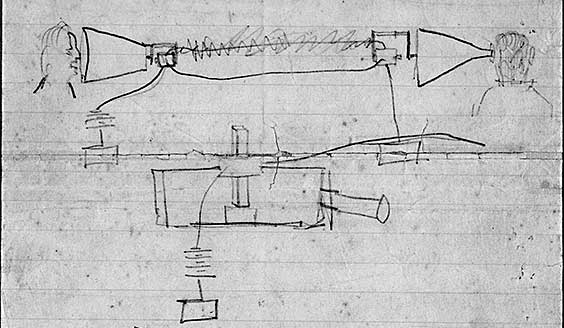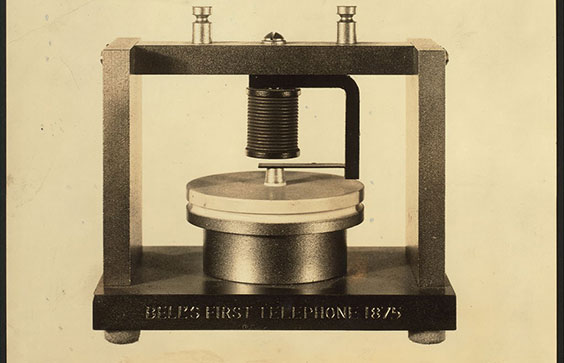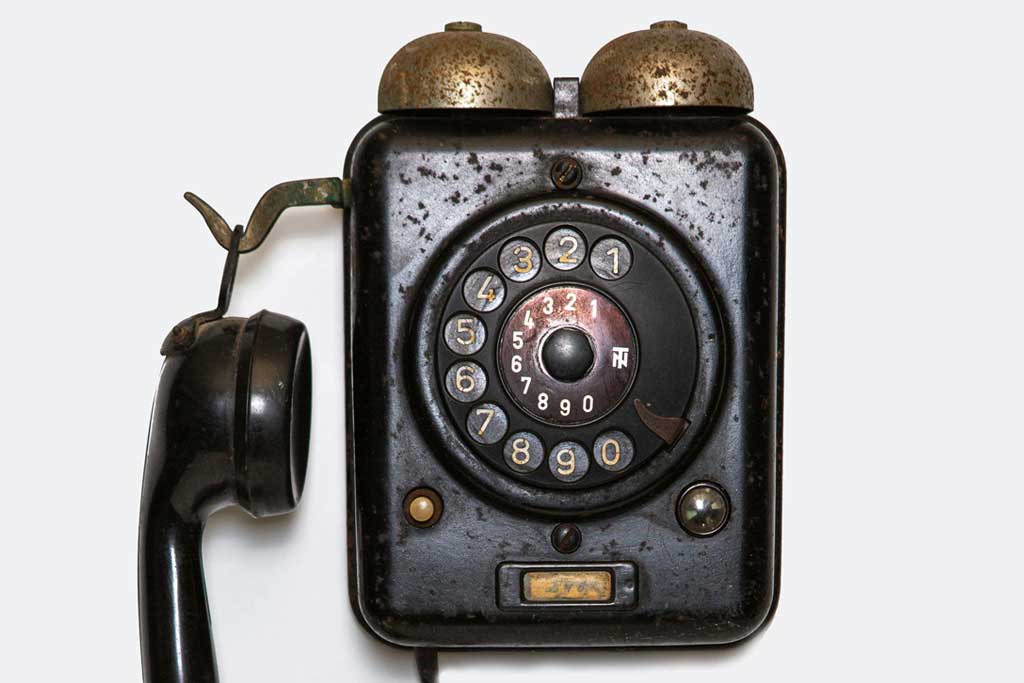The Genesis of an Idea
The story of the telephone landline begins in the latter half of the 19th century, a time of rapid industrialization and technological advancement. Alexander Graham Bell, a Scottish-born inventor residing in the United States, is widely credited as the inventor of the telephone. However, its invention is a subject of historical debate, with multiple inventors making significant contributions to its development.
Bell would never have arrived at his design without the achievements and ideas of other pioneering scientists of the time. Elisha Gray, an American inventor, also developed a telephone prototype around the same period and filed a patent caveat for his invention on February 14, 1876, just hours after Bell’s patent application. Antonio Meucci had a patent caveat on the books back in 1871 for a talking telegraph, 5 years before Bell’s patent, but ultimately did not renew it due to lack of funds. In 1857 German inventor Johann Philipp Reis began work on a telephone prototype, which was put to use in Menlo Park, New Jersey, by Thomas Edison in the development of the carbon microphone in 1861.
Thanks, fellas…but as they say in war and capitalism, history is written by the victors, and Bell filed the first successful patent for the telephone on March 7, 1876 (Improvement in Telegraphy). The phone ring heard around the world made history when Bell’s assistant, Thomas Watson, was working on the receiver and heard the sound of a vibrating bell. In a nearby room, Bell spoke the first intelligible transmission of a voice message over copper wires: “Mr. Watson, come here, I want to see you.” The telephone as we know it (or knew it) was here to stay. Or was it?

Birth of the Telephone Landline
Bell’s invention sparked a wave of excitement and anticipation, as people marveled at the possibility of communicating with others over long distances in real-time. Recognizing the transformative potential of his creation, Bell embarked on a mission to bring the telephone to the masses, laying the groundwork for what would become the telephone landline.
The earliest iterations of the telephone relied on direct point-to-point connections, limiting their practicality and scalability. However, the advent of the telephone exchange system revolutionized the landscape of telecommunications. Developed independently by several inventors, including Bell and the Hungarian engineer Tivadar Puskás, the telephone exchange enabled multiple users to connect with one another through a centralized switching mechanism, paving the way for the modern phone system.
In 1878, the first commercial telephone exchange was established in New Haven, Connecticut, marking the birth of the telephone landline as we know it today. Subscribers were assigned a phone number and connected to the exchange via physical wires, allowing them to make and receive calls to other subscribers within the network. Over time, telephone networks expanded, and address books were invented connecting cities, regions, and eventually continents, ushering in an era of unprecedented connectivity.

Impact of the Telephone Landline
The introduction of the telephone landline had far-reaching implications for society, economy, and culture. For the first time in history, people could communicate with one another instantaneously, transcending the constraints of time and space. Businesses flourished as communication barriers were dismantled, enabling rapid decision-making, collaboration, and commerce on a global scale.
The telephone also democratized communication, granting individuals from all walks of life access to a powerful tool for connecting with others. Families could stay in touch across great distances, friends could converse at the touch of a button, and emergency services could respond swiftly to those in need. Previously, long-distance communication was limited to written correspondence or telegraphy, both of which were slow and cumbersome. The telephone became an indispensable part of everyday life, weaving itself into the fabric of society. In the annals of communication history, few inventions have had as profound an impact as the landline telephone.
The Golden Age of the Landline
Throughout the 20th century, the landline telephone experienced unprecedented growth and proliferation. Telecommunication companies invested heavily in infrastructure, laying down extensive networks of telephone poles lines to connect homes, office landlines, and communities. The landline phone became an indispensable fixture in households around the world, symbolizing progress, modernity, and connectivity.
During this time, the landline phone served as more than just a communication device—it was a cultural icon and a symbol of status. Families eagerly awaited the installation of their telephone lines, while business users relied on landline connections to conduct transactions and coordinate operations. The distinctive ring of the telephone became synonymous with the anticipation of news, announcements, and social invitations.
Rise of Mobile Technology
The turn of the 21st century heralded the dawn of a new era in communication technology: the rise of mobile phones. Initially conceived as a portable alternative to landline phones, mobile devices quickly gained popularity for their convenience, mobility, and versatility. With the advent of digital networks and wireless technologies, mobile phones offered unprecedented flexibility in communication, allowing users to stay connected on the go.
As mobile technology advanced, the appeal of landline phones began to wane. Consumers were drawn to the portability and functionality of mobile devices, which not only enabled voice calls but also supported text messaging, internet browsing, and a plethora of applications. The rise of smartphones further accelerated the decline of landline usage as users embraced all-in-one devices that combined communication, entertainment, and productivity features.
The Changing Landscape of Communication
In addition to the proliferation of mobile technology, the communication landscape underwent further transformation with the advent of digital platforms and internet-based services. Email, instant messaging, and social media platforms emerged as popular alternatives to traditional voice communication, offering users new ways to connect and interact online.
In the 1980s, Integrated Services Digital Network (ISDN) was first developed as a way to provide higher-quality voice and data services. It is a set of communication standards for the simultaneous digital transmission of voice, video, data, and other network services over the traditional public switched telephone network (PSTN) and other digital networks. ISDN split the traditional copper phone line into multiple digital channels. It aimed to offer faster connection speeds, improved reliability, and support for a wider range of services, such as video conferencing and internet access. It was one of the first alternatives to the Plain Old Telephone Service (POTS) and played a crucial role in the evolution of telecommunications.
Voice over Internet Protocol (VoIP) technology revolutionized long-distance communication by enabling voice calls to be transmitted over an internet connection. VoIP phone services offered cost-effective alternatives to traditional phone lines, allowing users to make phone and video calls from their computers or mobile devices using internet connections. Additionally, online voice and video chat platforms such as Skype, Zoom, and FaceTime provided seamless communication experiences, further diminishing the relevance of landline phones in the digital age.
Decline of Landlines
Against the backdrop of rapid technological advancement, the decline of land lines became increasingly apparent. Fiber optic cables have largely replaced the copper network. Many households and businesses opted to forgo landline connections in favor of more flexible and cost-effective alternatives. Cell phones emerged as the primary mode of communication for millions of people worldwide, relegating landline phones to the realm of nostalgia and obsolescence. As of 2023, it’s estimated that there are roughly 6.92 billion smartphone users worldwide. That’s 86.29% of the global population.
In response to changing consumer preferences, phone companies scaled back investment in landline infrastructure and the traditional telephone line, focusing instead on expanding digital networks and cellular communications. In urban areas, where cellular coverage is widespread and internet connectivity is readily available, the need for landline phones diminished significantly. However, in a rural area with limited access to mobile networks, landline phones continue to play a crucial role in providing essential communication services.
The Landline’s Legacy and Future
Is the home telephone a thing of the past? Looking ahead, the future of the landline remains uncertain with the advent of new technologies. While its role may diminish in an increasingly digital world, certain factors ensure its continued relevance in specific contexts. Its legacy from the late 19th century endures as a testament to the transformative power of technology and its ability to reshape the way we connect with one another. The reliability and stability of landline connections make them indispensable in emergency situations, alarm systems, natural disasters, and other critical scenarios where reliable communication is paramount for the transmission of vital information.
Furthermore, having a home phone holds sentimental value for many individuals who grew up in an era before the ubiquity of mobile technology. For some, the familiar sound of a ringing landline phone evokes memories of simpler times, family gatherings, and shared moments of joy and sorrow.
While the landline phone may no longer occupy the prominent position it once did, its legacy endures as a testament to human innovation and adaptability. Is the death of the landline inevitable? As we navigate the ever-changing landscape of communication technology, we must remember the profound impact of the landline on society and the enduring value of human connection in an increasingly interconnected world. Whether it fades into obscurity or persists as a relic of the past, the landline phone will always hold a special place in history, reminding us of our collective journey toward greater connectivity and understanding.


